Removal Procedure
Caution: Unless directed otherwise, the ignition and start switch must be in the OFF or LOCK position, and all electrical loads must be OFF before servicing
any electrical component. Disconnect the negative battery cable to prevent an electrical spark should a tool or equipment come in contact with an exposed electrical terminal. Failure to follow these precautions may result in personal injury and/or damage to
the vehicle or its components.
- Disconnect the negative battery cable.
- Raise the vehicle. Support the vehicle. Refer to Lifting and Jacking the
Vehicle in General Information.
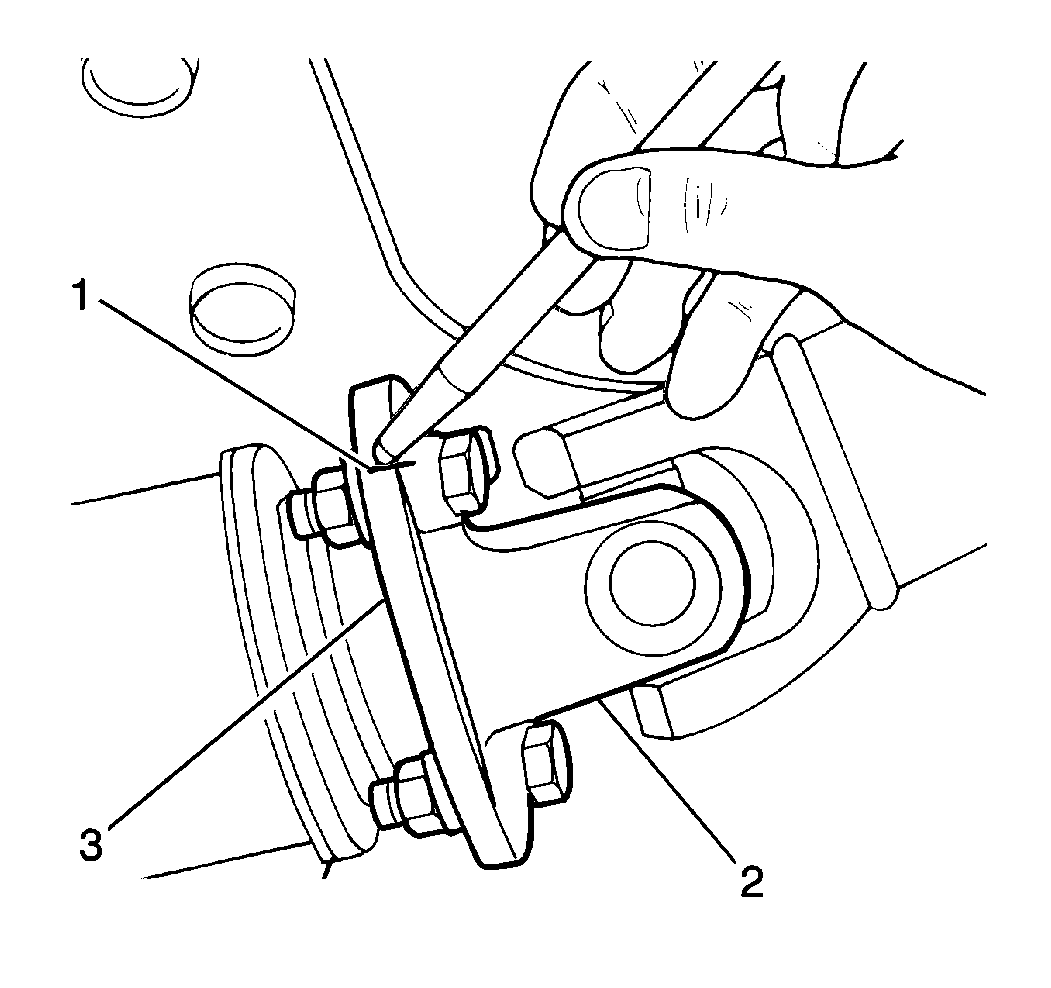
- Place an index mark (reference mark) (1) on the propeller
shaft pinion flange.
- Place an index mark (reference mark) on the front differential pinion
flange (3) of the transfer case to front differential propeller shaft (four-wheel
drive models).
- Remove the four nuts and the four bolts from the front differential pinion
flange (four-wheel drive models).
Important: Removing the propeller shaft from the transfer
case will result in fluid loss (four-wheel drive models).
- Separate the pinion flange yoke from the front differential pinion flange (four-wheel
drive models).
- Position and support the transfer case to the front differential propeller
shaft away from the transmission fluid pan.
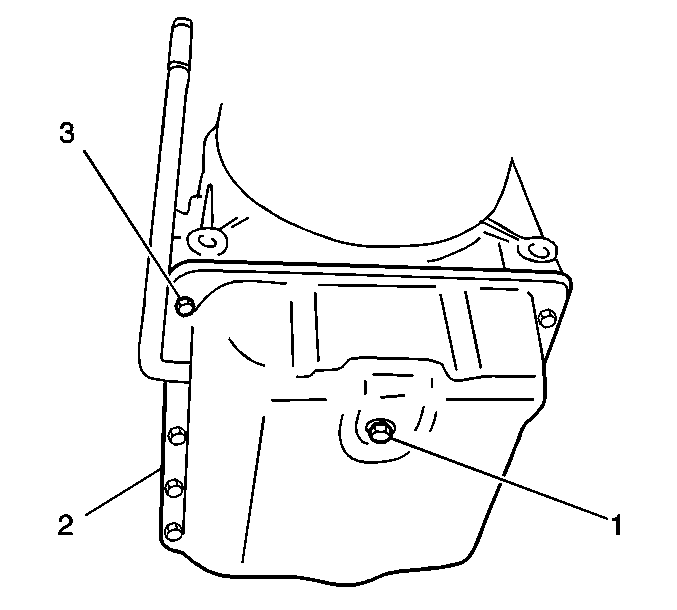
- Place a drain pan or suitable container under the transmission
drain plug (1).
- Remove the drain plug in order to allow the transmission fluid pan (2)
to drain.
- Remove the fourteen transmission fluid pan bolts from the transmission.
- Remove the transmission fluid pan from the transmission.
- Remove the gasket from the transmission.
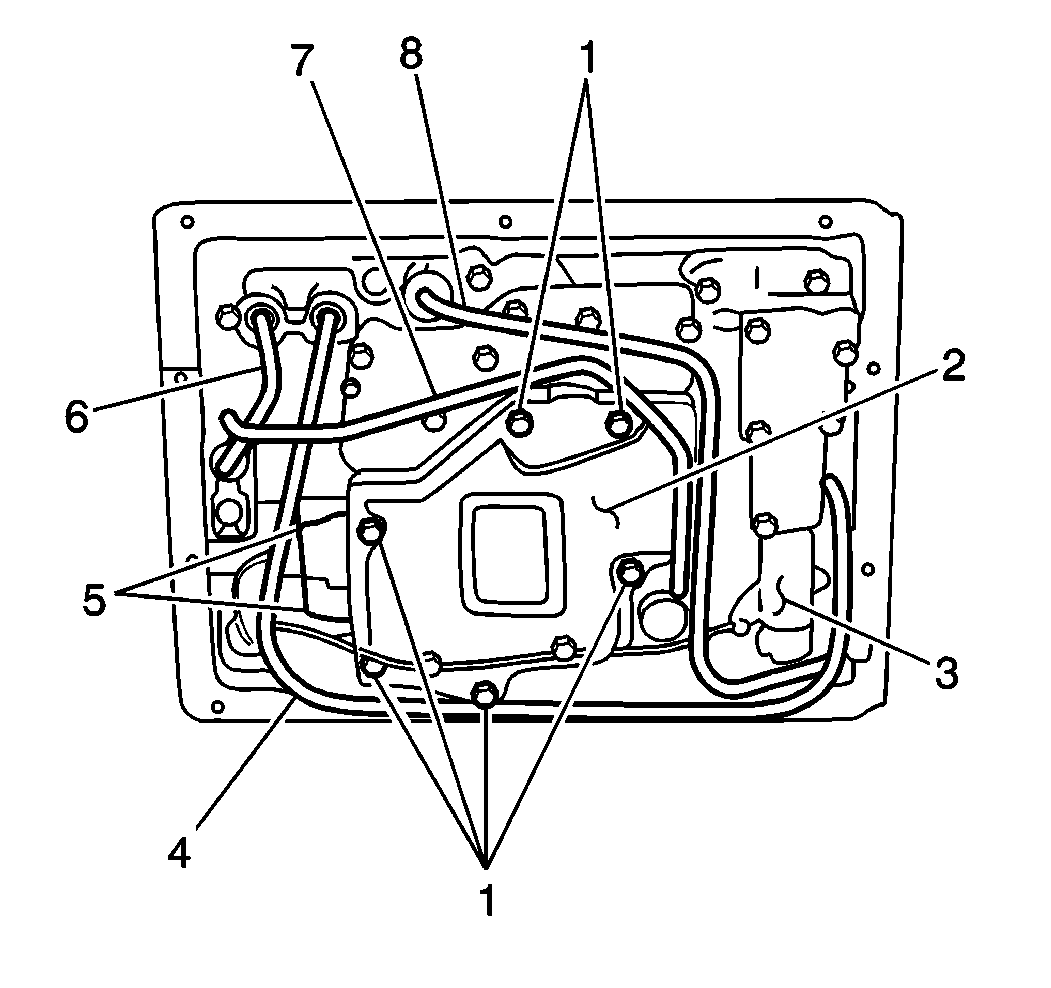
- Remove the three fluid pipes in the following order
7, 4 and 8.
- Remove the electrical connector from the shift solenoid assembly.
- Remove the following items from the transmission body:
| • | The brake applying cover |
| • | The brake applying cover gasket |
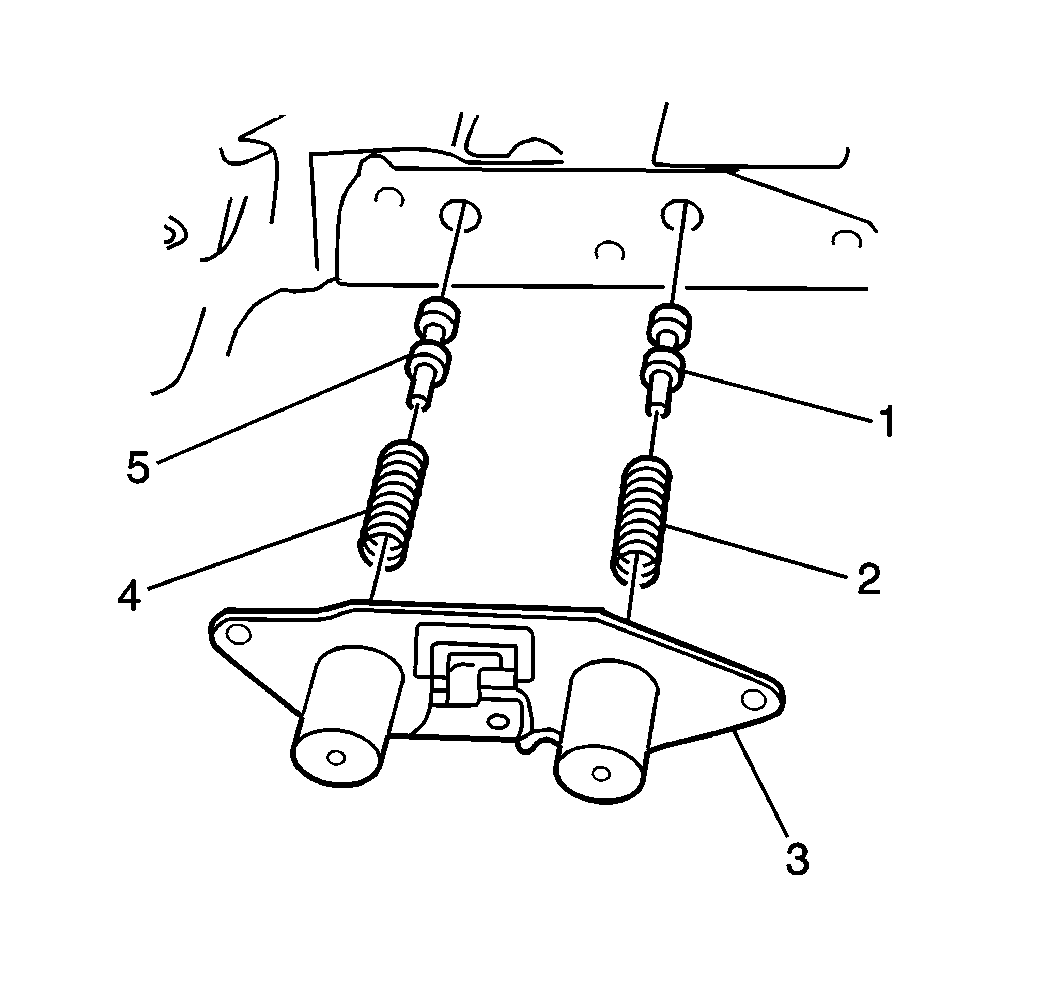
- Remove the following components from the lower valve
body:
| • | The shift solenoid assembly (3) |
| • | The shift solenoid assembly gasket |
Installation Procedure

- Install the new shift solenoid assembly gasket and
the shift solenoid assembly (3) to the lower valve body.
Notice: Use the correct fastener in the correct location. Replacement fasteners
must be the correct part number for that application. Fasteners requiring
replacement or fasteners requiring the use of thread locking compound or sealant
are identified in the service procedure. Do not use paints, lubricants, or
corrosion inhibitors on fasteners or fastener joint surfaces unless specified.
These coatings affect fastener torque and joint clamping force and may damage
the fastener. Use the correct tightening sequence and specifications when
installing fasteners in order to avoid damage to parts and systems.
- Secure the shift solenoid assembly onto the lower valve body with the three
bolts.
Tighten
Tighten the shift solenoid assembly bolts to 10 N·m
(89 lb in).
- Install the electrical connector to the TCC solenoid.
- Install the new brake applying cover gasket to the transmission body.
- Install the brake applying cover onto the transmission body.
- Secure the brake applying cover with the two bolts.
Tighten
Tighten the brake applying cover bolts to 10 N·m
(89 lb in).
- Apply a thin coat of automatic transmission fluid to the fluid pipe O-rings.

- Install the fluid pipes in the following order 8, 4
and then 7.
Important: When installing the transmission pan, ensure
that the filler tube connects properly.
- Install the new transmission fluid pan gasket to the transmission.
- Install the transmission fluid pan to the transmission.
- Secure the transmission fluid pan to the transmission with the fourteen
bolts.
Tighten
Tighten the fluid pan bolts to 5 N·m
(44 lb in).

- Install the transmission drain plug (1) into the transmission.
Tighten
Tighten the transmission drain plug to 16 N·m
(12 lb ft).

- Align the index marks (1) made during the front propeller
shaft removal (four-wheel drive models).
- Install the front propeller shaft into the vehicle (four-wheel drive models).
- Secure the front propeller shaft with four nuts and four bolts.
Tighten
Tighten the front propeller shaft nuts and bolts
to 50 N·m (37 lb ft).
- Lower the vehicle.

- Connect the negative battery cable.
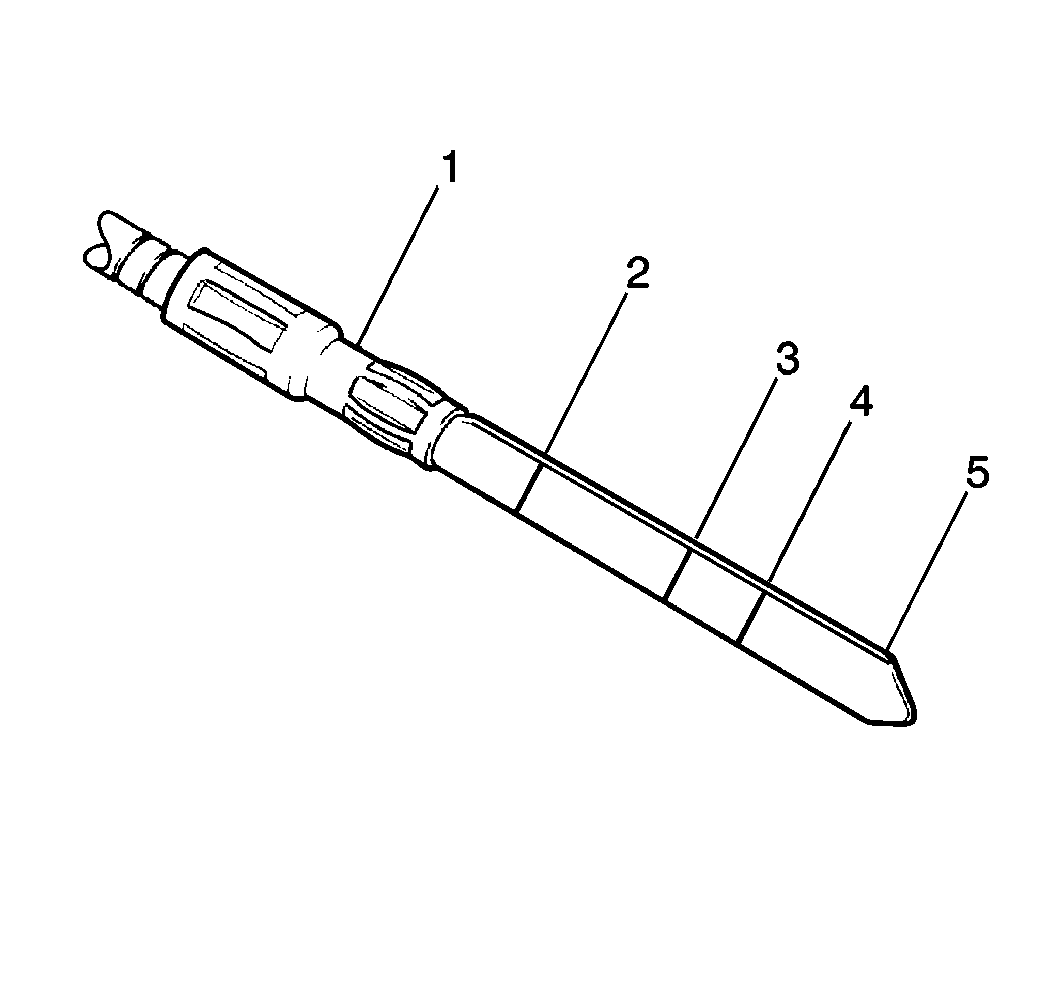
- Refill the transmission as necessary using the following
steps:
| 18.1. | Place the vehicle on a level surface. |
| 18.2. | Remove the fluid level indicator. |
| 18.3. | Add approximately 1.5 liters (1.6 quarts) of Dexron®-III
automatic transmission fluid GM P/N 12346143, or the equivalent, into the
fluid filler tube. |
| 18.4. | Install the fluid level indicator into the fluid filler tube. |
| 18.5. | Apply the parking brake and block the vehicle wheels. |
| 18.6. | Start the engine with the selector lever in the PARK position. DO NOT
race the engine. |
| 18.7. | Run the engine at idle and move the selector lever through each range
and return it to the PARK position. |
| 18.8. | With the engine running at idle, remove the fluid level indicator from
the filler tube and wipe the indicator off. |
| 18.9. | Reinsert the fluid level indicator into the filler tube making sure it
is seated in its original position. |
| 18.10. | Remove the indicator and check the fluid level. The level should be between
the FULL HOT (2) and the LOW HOT (3) marks. Add fluid in order to bring the
fluid level to the FULL HOT mark if the level is below the LOW HOT mark. Bringing
the fluid level from the LOW HOT mark to the FULL HOT mark required 0.3 liters
(0.3 quarts) of fluid. Use Dexron®-III automatic transmission fluid GM
P/N 12346143, or the equivalent. |










